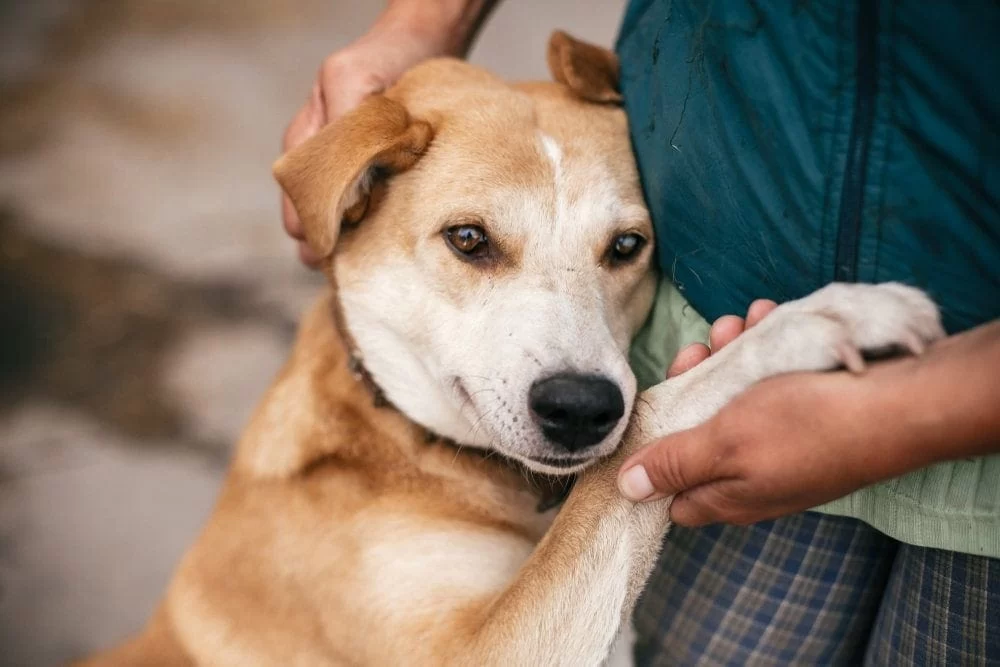Signs Your Pet is in Pain or Distress
As a pet owner, one of my biggest concerns has always been understanding when my pets are in pain or distress. They can’t tell us in words what they’re feeling, so it’s up to us to recognize the signs. I remember when my dog Max started limping one day and seemed quieter than usual. It was easy to dismiss it as nothing serious, but deep down, I knew something was wrong. As I began to pay more attention to his behavior and habits, I realized that he was likely in pain. Recognizing the signs of discomfort early on can make all the difference when it comes to getting them the help they need.
Behavioral Changes in Pets: The Subtle Indicators
The first sign that something is off with your pet often comes in the form of behavioral changes. Max, usually an energetic and happy dog, started retreating to his bed more often, refusing to play with his favorite toys. If I hadn’t paid close attention, I might have brushed it off as him just being tired or having an off day. But it was more than that.
Pets are experts at hiding their pain, so it’s up to us to notice subtle shifts in their behavior. Here are some common behavioral changes that might signal your pet is in distress:
- Aggression: If your normally calm pet suddenly becomes irritable or aggressive, it could be due to pain. Pets often lash out when they’re hurting, especially if touched in a sensitive area.
- Withdrawal: Pets in pain may isolate themselves more often. They may spend more time hiding or staying in a specific spot, as they don't want to move or interact.
- Changes in Social Behavior: If your pet is avoiding interaction with you or other family members, it could be an indication that something is bothering them. They might not want to be touched or even hugged, which could be a sign of discomfort.
Physical Signs to Look Out For
While behavioral changes are often the first indicators of distress, physical signs are just as important to monitor. Max, for example, started limping and showed signs of stiffness. He would hesitate before jumping on the couch, a behavior I hadn’t noticed before.
Some of the most common physical signs that your pet may be in pain or distress include:
- Limping or Difficulty Moving: If your pet suddenly starts limping or seems hesitant to walk, climb stairs, or jump, it could indicate joint or muscle pain.
- Changes in Posture: A pet in pain may adopt a hunched posture or avoid certain movements that usually come naturally to them. They may seem stiff or sluggish when walking.
- Excessive Grooming or Licking: If your pet is licking or biting a specific area more than usual, it could indicate pain or irritation, especially if it's accompanied by redness or swelling.
- Shaking or Trembling: Some pets shake or tremble when in pain. This could be due to discomfort, fear, or even anxiety related to the pain they’re experiencing.
Vocalizations: How Pets Communicate Pain
Many pets, especially dogs and cats, vocalize when they’re in pain or distress. Max, for instance, would whimper or cry when getting up from a nap or if I accidentally touched his sore leg. It took me a while to realize that these sounds were not just typical whining but rather his way of telling me something was wrong.
Common vocal signs that your pet may be in pain include:
- Whining or Whimpering: This is one of the most common vocalizations for pets in pain. They may whine to express discomfort, especially when trying to move or get up from a resting position.
- Hissing or Growling: Cats in pain often hiss or growl if they’re touched in a sensitive area. This is a clear sign that something is wrong and they are trying to protect themselves.
- Excessive Barking: Dogs may bark excessively when in pain. This could be their way of expressing frustration or discomfort, especially if they can’t move freely or are in distress.
Appetite and Bathroom Habits: Red Flags
Another important factor to consider is changes in your pet’s appetite or bathroom habits. If your pet suddenly stops eating, drinks less water, or has difficulty using the bathroom, it could be a sign of pain or distress. I remember when Max started refusing his meals and seemed uninterested in treats, something that was unusual for him.
Here are a few things to watch for:
- Loss of Appetite: Pain can cause a decrease in appetite, as eating may become painful or uncomfortable for your pet. If this lasts for more than a day, it’s time to consult a vet.
- Changes in Bathroom Habits: If your pet is having trouble going to the bathroom, whether it's due to constipation or difficulty squatting, it could indicate pain, particularly with their hips or abdomen.
- Excessive Thirst: In some cases, pets experiencing pain or distress may drink more water than usual, which could be a sign of an underlying medical issue.
What to Do If You Suspect Your Pet is in Pain
If you notice any of these signs in your pet, it’s important to take action right away. As a pet owner, I learned the hard way that ignoring pain signs can lead to bigger health issues down the road. After I noticed Max limping and whining, I took him to the vet, where we learned he had a sprained leg. He was given pain relief medication, and within days, he was back to his usual self.
If you suspect your pet is in pain, here’s what you should do:
- Consult a Veterinarian: The first thing you should do is consult a vet. Only a professional can determine the cause of your pet’s pain and recommend a treatment plan.
- Avoid Self-Medicating: Never give your pet human painkillers or medication unless specifically instructed by a vet. Many human drugs are toxic to animals and can cause severe harm.
- Provide Comfort: In the meantime, try to make your pet as comfortable as possible. Provide them with a quiet, soft space to rest, and avoid any activities that might exacerbate their discomfort.
Pets are so good at hiding their pain, but it’s our responsibility to watch for the signs and take action when needed. By being attentive to changes in their behavior, physical condition, and vocalizations, we can help ensure they get the care and relief they deserve.











